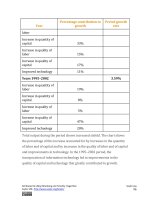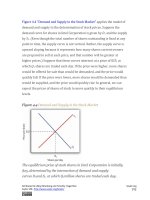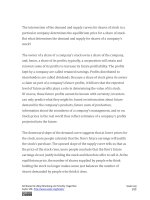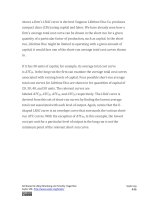Authors libby rittenberg 763
Bạn đang xem bản rút gọn của tài liệu. Xem và tải ngay bản đầy đủ của tài liệu tại đây (291.23 KB, 1 trang )
different crafts. Union goals went largely unfulfilled until the twentieth
century, when the courts began to favor collective bargaining between
workers and employers in disputes over wages and working conditions.
Closed-shop arrangements are illegal in the United States today, but many
states permit union shop arrangements, in which a firm is allowed to hire
nonunion workers who are required to join the union within a specified
period. About 20 states have right-to-work lawswhich prohibit union shop
rules.
The development of the industrial union, a form of union that represents
the employees of a particular industry, regardless of their craft, also aided
the growth of the labor movement. The largest industrial union in the
United States, the AFL-CIO, was formed in 1955, when unions accounted
for just over 35% of the labor force. The AFL-CIO remains an important
economic and political force, but union strength has fallen since its peak in
the 1950s; today, less than 10% of workers in the private sector belong to
unions. Quite dramatically, in 2005, three unions, representing about a
third of the total membership, withdrew from the AFL-CIO. The breakaway unions argued that they would be more successful working on their
own to recruit new members. The impact of this break-up will not be
known for several years.
Part of the reason for the failure of unions to represent a larger share of
workers lies in the market forces that govern wages. As the marginal
revenue product of workers has risen throughout the economy, their
wages have increased as well—whether they belonged to a union or not.
Impressive economy-wide wage gains over the last two centuries may be
one reason why the attraction of unions has remained weak.
Attributed to Libby Rittenberg and Timothy Tregarthen
Saylor URL: />
Saylor.org
763









